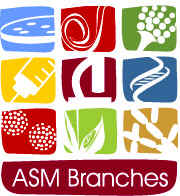| |
Ecology of the Viral Hemorrhagic Septicemia Virus (genotype IVb) in the Laurentian Great Lakes
Abstract: Since its first isolation in 2003 from Lake St. Clair, Michigan, the Viral Hemorrhagic Septicemia Virus (VHSV) has caused massive mortalities in many freshwater fish species in the watersheds of lakes Erie, Huron, Michigan, and Ontario. Sequence analysis of the nucleoprotein and glycoprotein genes confirmed that the virus was a member of the North American genotype of VHSV; however, the Lake St. Clair isolates were sufficiently distinct to be considered a separate sub-lineage (IVb), suggesting its origin may have been from marine species inhabiting the eastern coastal areas of the USA or Canada. Reservoir of infection and vector of transmission of this deadly virus are currently unknown. Such information is needed in order to develop sound management strategies to control the spread of the disease. Based on field observations and laboratory studies, it was demonstrated that that VHSV-IVb has a host range that is much broader than any other fish virus. Furthermore, experimental infection studies demonstrated that some fish species such as the coho salmon can survive the infection and shed the virus for up to nine months. This finding shed light on the important role played by surviving and carrier fish in maintaining the virus in the environment. Coho salmon is a migratory fish whose life cycle alternates between Lake Michigan and inland streams therefore can contribute to the spread of VHSV within the Great Lakes basin. Additional studies into the ecology of VHSV demonstrated that the blood sucking leech Myzobdella lugubris and amphipods f the genus Diporeia carry VHSV in their internal organs. Findings of additional studies on VHSV-IVb ecology in the Laurentian Great Lakes will be presented.
Fall 2009 Home
|
|



